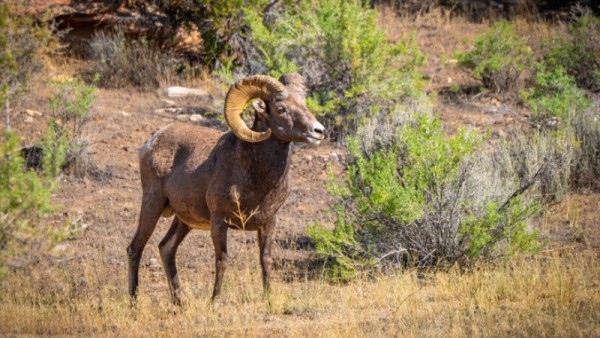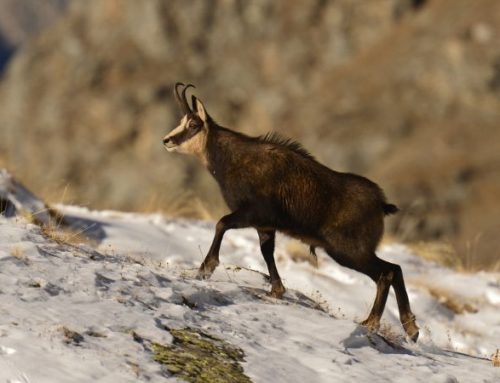On the Trail of North America’s Great Sheep – The Legend of the Bighorn and Its Rocky Brothers”
Some hunts tell the story of an entire continent—its history, its geography, and its untamed spirit. Hunting North America’s great mountain sheep—Bighorn, Dall Sheep, and Stone Sheep—is not just a test of skill and endurance but a true rite of passage in the career of every mountain hunter.
The hunter who embarks on this journey to extreme lands knows they are facing the ultimate challenge. Here, being a good marksman is not enough—you must understand the mountains, embrace the hardship, and respect the animal and its millennia-old legacy.
The Bighorn Sheep: The Legend of the Rockies
Among all North American wild sheep, the Bighorn Sheep (Ovis canadensis) is undoubtedly the most iconic. A powerful, elegant, and proud animal, it thrives in the harshest terrains of the Rocky Mountains and the rugged mountain deserts of the Southwest.
The adult male bears an impressive crown of horns on its head, spiraling into perfect curves that tell the story of years of hardship and battles for dominance. Each twist speaks of fights, winters endured, and grazing lands reclaimed.
The Bighorn is the embodiment of the mountain itself—beautiful, untouchable, and unforgiving.
History and Myth of a Revered Animal
In Native American culture, the Bighorn was much more than prey. It was a spirit guide, a sacred animal associated with strength and resilience. Its horns, believed to hold great power, were used to craft bows and ritual tools.
With the arrival of trappers and the first white explorers, the mountain sheep became one of the most coveted trophies—not just for its meat and horns, but because it symbolized the ultimate triumph over the harshest wilderness.
In the 1950s, the Bighorn reached the lowest point in its history: poaching, diseases transmitted by domestic sheep, and habitat loss nearly drove it to extinction. It was the American hunting culture—through the establishment of regulated permits and conservation funding—that saved it, turning Bighorn hunting into the most prestigious of all mountain hunts.
Dall and Stone Sheep – The Northern Brothers
Alongside the Bighorn, North America is home to two other magnificent species of wild sheep:
-
Dall Sheep (Ovis dalli) – The White Ghost of Alaska
The Dall Sheep inhabits the northernmost regions, roaming the mountains of Alaska and the Yukon. Pure white as the snow, elegant, and elusive, it moves effortlessly across glaciers and sheer cliffs with astonishing agility.
Its hunt is a true Arctic expedition, where hunters must face the cold, the wind, and the solitude of endless landscapes.
-
Stone Sheep (Ovis dalli stonei) – The Gray Pearl of British Columbia
Rarer and more precious, the Stone Sheep is perhaps the most coveted by enthusiasts. Its marbled gray coat blends seamlessly with the rocky terrain, and its hunting grounds are among the most breathtaking in the world.
Hunting the Stone Sheep is considered the pinnacle of every mountain hunter’s career.
Extraordinary Adaptations – How Nature Has Shaped These Animals
But it’s the mind that makes the difference. One must learn to embrace frustration, exhaustion, cold, and high altitude. Clarity is essential to avoid mistakes when, after days of waiting, the old ram finally presents itself.
Conservation and Ethical Hunting: A Model of Success
In North America, sheep hunting is managed with absolute rigor. Permits are limited, populations are closely monitored, and most of the revenue from hunting licenses directly funds conservation projects.
The success of these policies is evident: after decades of challenges, Bighorn and Dall sheep populations are now thriving. Every hunter who embarks on this adventure becomes, in essence, a guardian of this delicate balance.
The Legend of American Sheep Hunting
In the United States and Canada, sheep hunting is considered the pinnacle of mountain hunting. There is even the “Grand Slam of North American Sheep”, an elite achievement awarded to those who successfully hunt all four subspecies.
But true glory, as American hunters say, is not in the trophy. It lies in the journey, the struggle, and the achievement of venturing where only a few dare to go.
Bighorn Hunting and the Encounter with the Grizzly – When the Mountain Hides a Greater Danger
Hunting North America’s mountain sheep, like the Bighorn Sheep, means venturing into the continent’s wildest and most remote regions. These are lands where nature still reigns supreme, where every step is earned through hardship, and every encounter with game is the result of days of trekking, silence, and patience.
Yet among the rocky cliffs, isolated valleys, and wind-swept peaks, there is a danger often underestimated: the grizzly bear. A silent, powerful predator capable of turning the most epic hunt into a close encounter with primal fear.
The Realm of the Grizzly and Overlapping Habitats
Hunting Bighorn and other mountain wildlife inevitably takes hunters deep into grizzly territory.
From British Columbia to Alberta, from Alaska to Montana, the best sheep hunting areas overlap with regions where grizzly bears are increasingly present. Years of protection and wildlife management have allowed their population to grow and expand, reclaiming areas they had once abandoned.
The problem? In the same valleys and along the same ridgelines where hunters pursue great rams, grizzlies hunt, feed, and roam in search of carrion, berries, and easy opportunities.
Why Grizzlies Pose a Real Danger During Sheep Hunts
1. Bears Are Attracted to Kill Sites
The scent of blood and the internal organs of a freshly harvested animal can draw a grizzly from miles away. Opportunistic scavengers by nature, these bears know that following the smell of a carcass often leads to an effortless feast.
In the hours following a ram’s harvest, the risk of attracting a grizzly is extremely high—especially if the carcass remains on the ground or if the hunter has to leave it temporarily for retrieval.
2. Grizzlies Defend Their Territory
In parts of British Columbia and Alaska, grizzlies dominate entire valleys. It’s not uncommon for a bear to react aggressively to the mere presence of a human, whom it perceives as an intruder.
Close encounters are becoming increasingly frequent, often occurring near campsites or in natural choke points along travel routes.
3. An Unpredictable and Lethal Animal
An adult grizzly can weigh over 350–400 kg (770–880 lbs), run up to 50 km/h (31 mph), and attack without warning. Female bears with cubs are especially aggressive.
A grizzly is not just a large and powerful animal—it is also an intelligent predator. It knows how to use the wind, natural cover, and the time of day to approach unnoticed.
The Mountain Does Not Forgive: The Importance of Caution
During a mountain sheep hunt, the hunter is often alone or accompanied by a single guide in vast, remote territories, far from any help. Communication is difficult, and response times are long.
A grizzly encounter can turn deadly within seconds. And a standard hunting rifle may not always be sufficient or appropriate to stop a charging bear.
How to Manage the Grizzly Risk on a Sheep Hunt
✅ 1. Always Be Aware of the Predator’s Presence
No hunter should ever forget that, in these regions, they are not at the top of the food chain. Every movement, every stop, and every campsite must be planned with bear risk in mind.
✅ 2. Use Bear Spray and Always Have a Backup Plan
High-powered pepper spray is considered more effective and safer than a rifle at close range against a grizzly. It should always be kept within easy reach, not inside a backpack.
✅ 3. Manage the Kill Wisely
After harvesting a sheep:
-
Field dress and clean it quickly.
-
Move the meat away from the campsite.
-
Plan for a fast and safe retrieval.
-
Avoid spending the night near the carcass.
✅ 4. Avoid Risky Behavior
-
Never approach an abandoned carcass without thoroughly checking the area.
-
Never chase a grizzly or attempt to scare it off with gunfire.
-
Stand your ground only if necessary and always have an escape route.
The Encounter That Changes Your Perspective
Every hunter who has experienced a close encounter with a grizzly describes the same feeling: suddenly realizing how small and fragile they are—just another part of a world where nature still rules.
The mountains that shelter the Bighorn also belong to the grizzly. Their presence is not just a risk but a sign of balance. It serves as a reminder to every hunter that out there, in those vast and untamed lands, you are never truly alone.
The Allure and Respect for a Nature That Grants No Favors
Hunting North American sheep is one of the toughest and most fascinating experiences one can undertake. But it is also an adventure that demands awareness, respect, and complete preparation.
Because out there, among the rocks and snow, the true king doesn’t always wear horns. Sometimes, he moves silently on four legs, nose to the wind, with an instinct sharpened to track down every hunter who dares to challenge the mountain.













